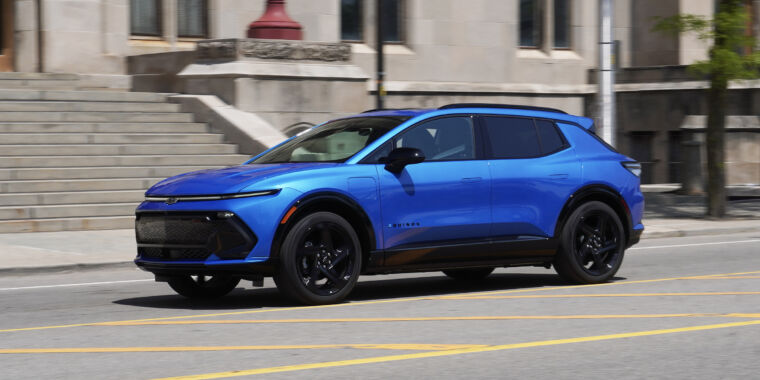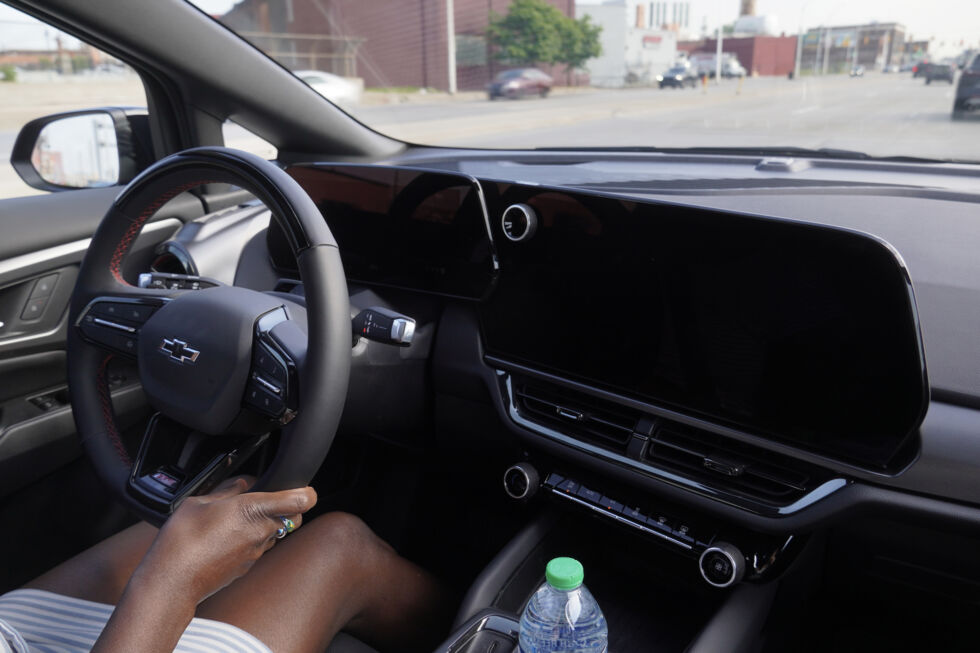The 2024 Chevrolet Equinox EV shows GM can make a car for the masses

Michael Teo Van Runkle
A new entry-level EV from General Motors hits the market this year bearing the name Equinox, but other than nomenclature, this Chevy is not at all related to the current internal-combustion compact crossover. Instead, the new Equinox EV rides on the smallest iteration of GM’s Ultium platform until the Bolt reboots with a new (lithium iron phosphate) Ultium battery pack.
The Equinox EV shares its chassis with the forthcoming Cadillac Optiq but aims instead to hit the market as cheaply as possible and significantly undercut Tesla’s Model Y. Deliveries will start later this year with the LT trim level, which has a starting MSRP of $34,995. Eager to prove what it no doubt hopes will be the new cash-cow EV’s bona fides, Chevrolet invited media to Detroit to drive a fleet of Equinoxes in various trim levels.
On paper, the Equinox’s stats look fairly solid. A smallish 85 kWh battery is sufficient for an EPA range estimate of 319 miles (513 km) for the front-wheel-drive base model. Output for the single motor clocks in at a respectable 213 hp (159 kW) and 236 lb-ft (320 Nm) of torque. Perhaps the only downside appears to be a max DC fast-charging rate of 150 kW, though thanks to the battery’s overall capacity, the Equinox should still add 77 miles (124 km) of range in about 10 minutes.
-
Chevrolet brought along both RS (pictured) and LT trims of the Equinox EV.
Michael Teo Van Runkle -
The shape shares little with the gasoline-powered Equinox.
Michael Teo Van Runkle -
The Equinox EV is 191 inches (4,851 mm) long, 77 inches (1.956 mm) wide, and 65 inches (1,651 mm) tall.
Michael Teo Van Runkle -
The 3RS can be specced with a rather bold interior.
Chevrolet -
A look at the back seat. This stormtrooper-spec interior is available with the 3LT.
Chevrolet -
There’s 26.4 cubic feet (748 L) of storage space with the rear seats in use, or 57.2 cubic feet (1,620 L) with the rear seats folded flat.
Chevrolet
What’s the single-motor version like on the road?
From behind the wheel, I expected the FWD Equinox’s less-than-overwhelming power figures to result in sluggish acceleration. Luckily, instantaneously available grunt can produce just enough pep to cause a bit of torque steer, and I kept up with traffic without concern. Harder pulls above 45 mph (72 km/h) seem blunted, though—perhaps to maximize range.
In typical Ultium fashion, the steering can be best described as vague-ish, which Chevy’s increasingly thick-rimmed steering wheels don’t exactly help. But the Equinox never tries to play at sports car ambitions. And on Detroit’s battered roadways, the suspension runs the full gamut from smooth to stiff, depending on speed and driving style.
Keep things easy, and the Equinox treads lightly. Push harder or shift the battery pack’s mass aggressively over two wheels (via acceleration, braking, or cornering) and the dampers appear to struggle a bit. Jumping between test vehicles all day, I noticed a difference between the 19-inch and optional 21-inch wheel-and-tire combos. Making the right choice will come down to desired performance and, really, what region customers live in and how the local roads fare.

Michael Teo Van Runkle
Real-world range matters most in a commuter car, and the Equinox performed admirably, if not as well as the Silverado fleet also on hand in Detroit. For one vehicle I tracked, I used 86 miles (138 km) of claimed range to drive 78 miles (126 km), with the air conditioning blasting on a hot day in a black car, and mostly at highway speeds, where larger EVs with upright profiles—and therefore a larger frontal area—tend to struggle.








